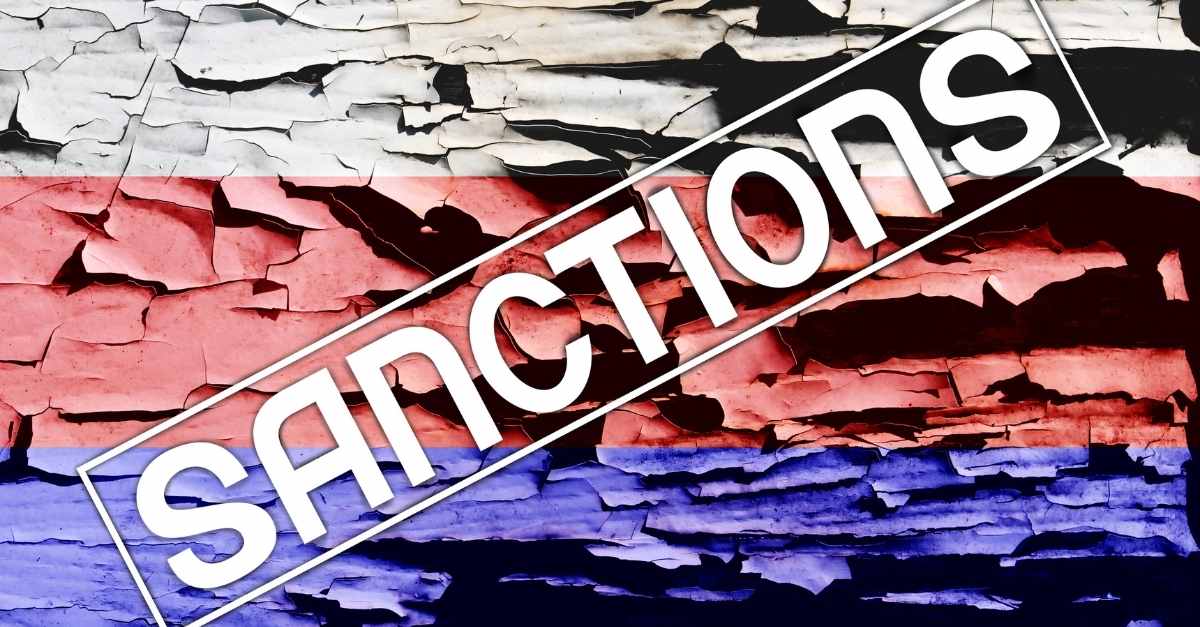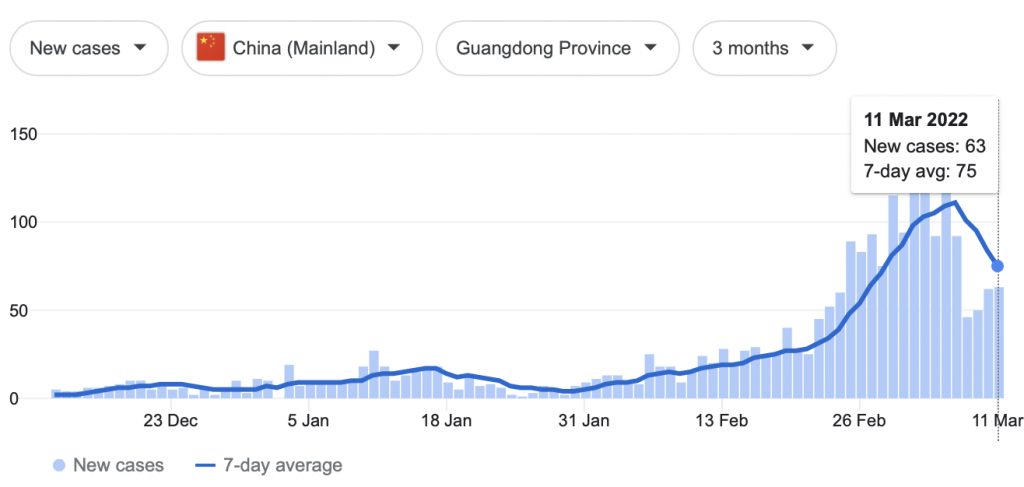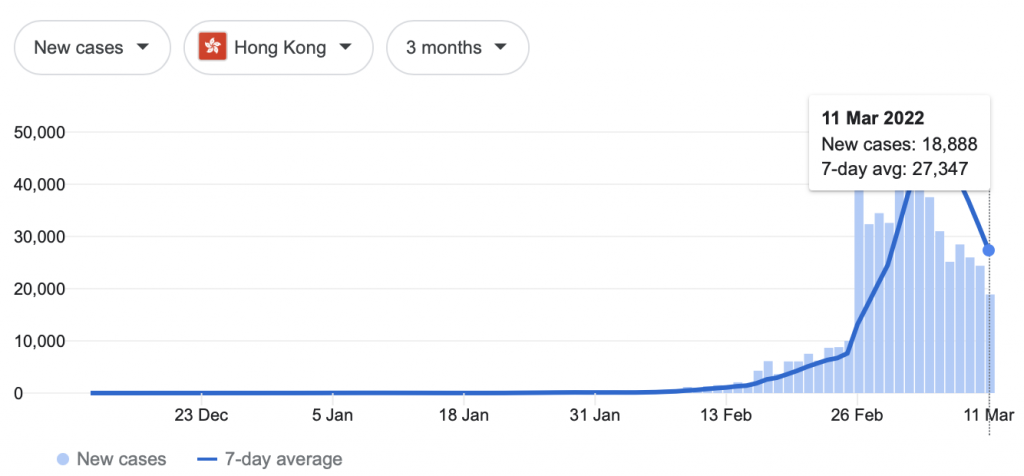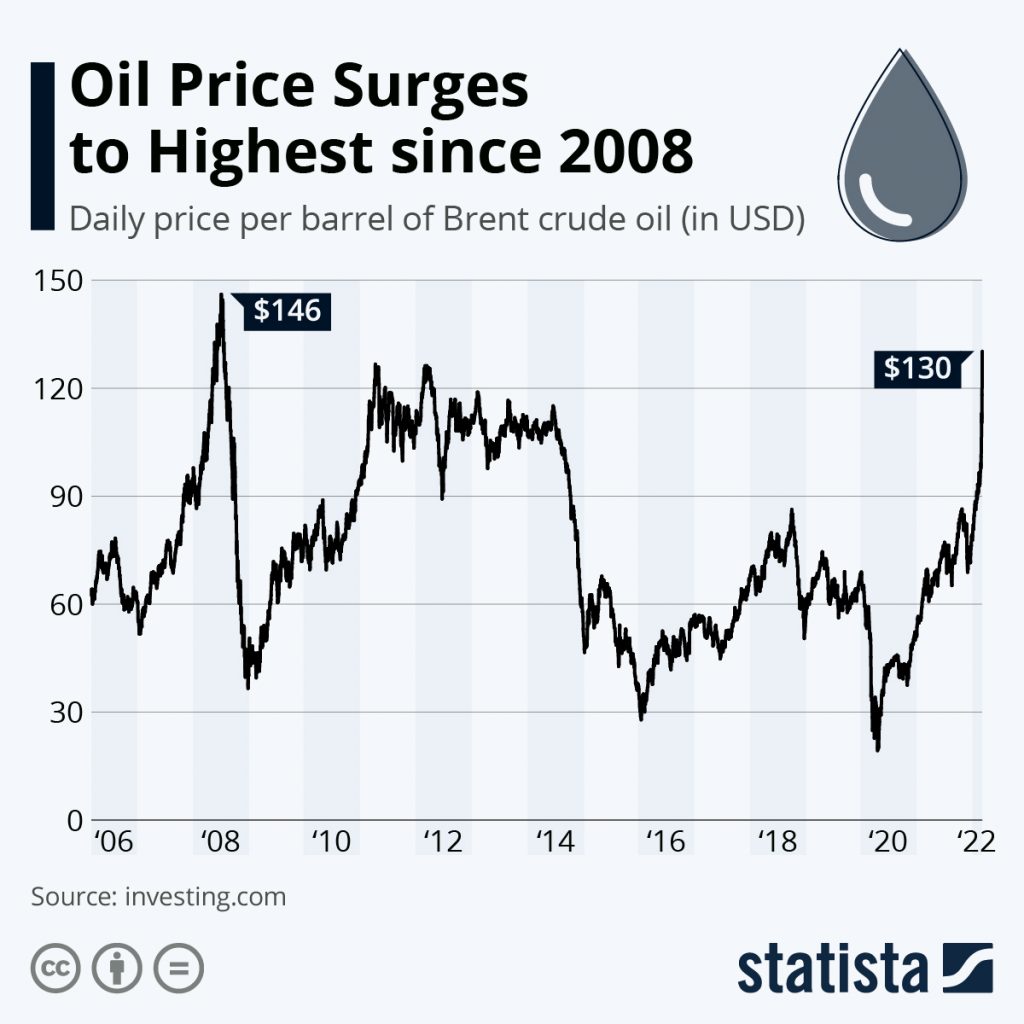
The horrific invasion of Ukraine and the resulting sanctions on Russia are starting to have effects that importers & exporters are feeling. Combined with the consequences of covid outbreaks and the already very high shipping prices, they will probably make for a rough environment in the next few months.
Let’s go through the 4 main issues one by one.
1. China is having a hard time containing covid
For the past couple of weeks, many people from our Shenzhen office have been in quasi-lockdown. Dongguan, located just next to Shenzhen, is also seen as relatively high risk. Here are the data about Guangdong province (source: Google).
Shanghai is also suffering its worst outbreak.
The airports and sea ports of both Shenzhen and Shanghai are among the largest in the world when it comes to merchandize freight. Fewer flights mean less capacity, higher prices, and longer lead times.
The situation is not better in the rest of the country. More to the North, China locks down city of 9 million amid new spike in cases:
China on Friday ordered a lockdown of the 9 million residents of the northeastern city of Changchun amid a new spike in COVID-19 cases in the area attributed to the highly contagious omicron variant.
If you buy automotive parts, your supplier’s factory might be in Changchun and might be closed as I wrote this article.
Here are overall data about all of mainland China:
This curve is not moving in the right direction… Nobody can say “this will not impact our production”.
2. Cancelled flights
Last week, many flights to and from Shenzhen were cancelled. On Monday, I was told 90% of the flights to Shenzhen were cancelled, for example. Imagine the impact on the ability to send air cargo from that airport.
You might think, why not ship through the Hong Kong airport instead? Well, that city is right in its worst covid outbreak. The trucks cannot go in and out easily.
As a result, goods have to spend about 7 days in transit from Shenzhen to Hong Kong (!!). And it is unpredictable, which means freight forwarders cannot lock space on planes.
3. Closed Russian airspace
Most (all?) flights from China to Europe now have to go around Russia. And that makes their flight routes longer. This re-routing will inevitably result in fewer direct flights and in more expensive air freight.
The SCMP did a nice job illustrating the consequences of flying around closed airspace in this article.
Logistics providers are scrambling. Look at this DHL update released on 11 March. It contains a list of “temporary service adjustments”. It may take up to 10 additional days to get boxes from South China to Europe!
4. Higher oil price
The international price of crude oil has been going up sharply:
And the sanctions against Russia are probably going to make this worse.
This has a direct impact on the cost of transportation. All the shipping lines and airlines are bumping their prices up.
To sum up, the next few months are not going to be smooth sailing. They are going to be unpredictable.
There is also a good chance that this contraction of international trade leads to a dip in economic growth. We may even get a recession coupled with high inflation. And, who knows, the current military confrontation might escalate. The world is becoming a dangerous place.
Read more about supply chain risks here…
- Supply Chain Risk Reduction Strategies [Presentation]
- Supply Chain Risk Management, Part 1: What are VUCA and Black Swans?
- Supply Chain Risk Management, Part 2: The Business Continuity Plan
- Supply Chain Risk Management, Part 3: A Purchaser Supply Chain KPI Scorecard’s Benefits
- Supply Chain Risk Management, Part 4: How Much Inventory Do You Need?
- Supply Chain Risk Management, Part 5: Moving Manufacturing to Vietnam, Thailand, Malaysia, or India (Pros & Cons)





